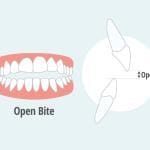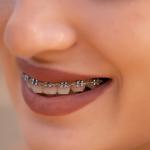A radiant smile is often associated with excellent oral health and attractiveness. Among the various factors that contribute to a beautiful smile, the spacing of teeth plays a crucial role. Proper spacing, or the lack thereof, can significantly impact both the aesthetics and functionality of one’s teeth. This article aims to provide a comprehensive guide to understanding the importance of spacing in teeth and its implications for overall dental health. From discussing the natural spacing of teeth to addressing the potential issues arising from overcrowding or excessive gaps, we will explore the significance of proper tooth spacing and the available treatment options to achieve optimal oral health.
The Natural Spacing of Teeth
The arrangement of teeth in the oral cavity typically results in natural spacing. This spacing allows for proper alignment, occlusion, and optimal oral function. In a healthy mouth, each tooth has its designated place, allowing for effective biting, chewing, and speaking. The natural spacing also facilitates oral hygiene practices, such as brushing and flossing, as it prevents food particles from getting trapped between teeth.
The Aesthetic Impact of Spacing
Teeth with ideal spacing contribute to an aesthetically pleasing smile. Even, symmetrical gaps between teeth can enhance facial harmony and boost self-confidence. On the other hand, irregular spacing, such as excessive gaps or crowding, can affect the overall appearance of one’s smile.
Problems Arising from Excessive Spacing
Excessive spacing between teeth, known as diastema, can also pose challenges to oral health and aesthetics:
- Pronounced Spaces
- Malocclusion
- Speech Impediments
- Increased Risk of Gum Disease
Pronounced Spaces
Large spacing between teeth can detract from an otherwise beautiful smile and lead to self-consciousness.
Malocclusion
Diastema may be associated with a misalignment of the teeth or jaw, affecting the bite and overall oral function.
Speech Impediments
In some cases, excessive spacing can influence speech patterns and pronunciation.
Increased Risk of Gum Disease
Food particles can become lodged in the gaps, promoting the growth of bacteria and increasing the risk of gum disease.
The Causes and Impact of Excessive Spacing
Excessive spacing, also known as diastema, refers to significant gaps between teeth. Several factors can contribute to this condition, including:
- Genetics
- Missing Teeth
- Tooth Size Discrepancies
- Habits and Developmental Factors
Genetics
In some cases, excessive spacing is hereditary, and individuals may have naturally occurring gaps between their teeth.
Missing Teeth
Gaps can occur due to the absence of permanent teeth, resulting in uneven spacing between neighboring teeth.
Tooth Size Discrepancies
Disproportionate tooth sizes can lead to gaps between teeth, especially if there is a significant difference in the size of the front teeth.
Habits and Developmental Factors
Thumb sucking, tongue thrusting, or prolonged use of pacifiers can influence the development and alignment of teeth, potentially resulting in excessive spacing.
Treatment Options for Spacing Issues
Thankfully, there are various treatment options available to address spacing issues and restore optimal oral health and aesthetics:
- Orthodontic Treatment
- Dental Bonding
- Veneers
- Dental Implants
- Retainers and Splints
Orthodontic Treatment
Traditional braces or clear aligners like Invisalign can gradually shift teeth into their proper positions, correcting crowding or excessive spacing. Orthodontic treatment applies gentle pressure to the teeth over a period of time, gradually aligning them and improving spacing. This option is particularly effective for moderate to severe spacing issues.
Dental Bonding
Dental bonding and composite veneers involve applying a tooth-colored resin material to the affected teeth. The resin is sculpted and shaped to fill in gaps or spaces, creating a more even appearance. Dental bonding is a non-invasive and cost-effective solution for minor spacing issues.
Veneers
Dental veneers or dental laminates are thin, custom-made shells that are bonded to the front surface of teeth. They can be used to address spacing concerns by creating the illusion of properly aligned teeth. Veneers can also improve the color, shape, and overall appearance of the teeth, resulting in a natural-looking and beautiful smile.
Dental Implants
In cases where missing teeth contribute to spacing issues, dental implants can be a suitable treatment option. Implants are surgically placed into the jawbone, providing a stable foundation for artificial teeth. By filling in the gaps left by missing teeth, dental implants can help restore proper spacing and improve oral function.
Retainers and Splints
After orthodontic treatment, retainers or splints may be recommended to maintain the corrected spacing and prevent relapse. These devices help ensure that the teeth remain in their new positions, allowing for long-term stability and optimal results.
Conclusion
Achieving proper spacing in teeth is essential for both oral health and aesthetics. Whether it’s addressing crowding or excessive gaps, it’s important to seek appropriate treatment to prevent potential dental issues and improve overall well-being. From orthodontic options like braces and aligners to cosmetic solutions like dental bonding and veneers, there are various treatments available to meet individual needs. Consulting with a qualified dental professional is crucial to assess the specific spacing concerns and determine the most suitable treatment plan. By investing in proper tooth spacing, individuals can enhance their smiles, boost their self-confidence, and enjoy the numerous benefits of optimal oral health for years to come. Remember, a beautiful smile begins with well-aligned and properly spaced teeth.





